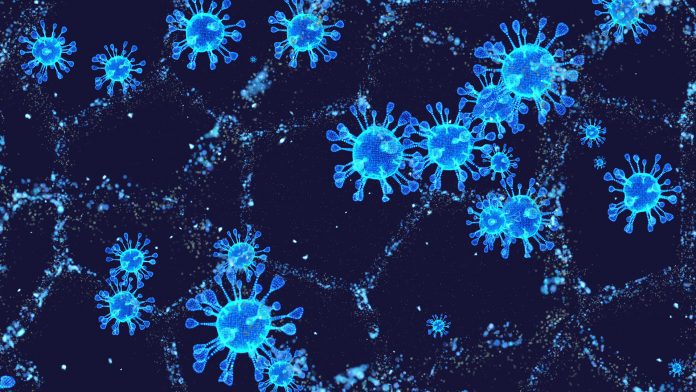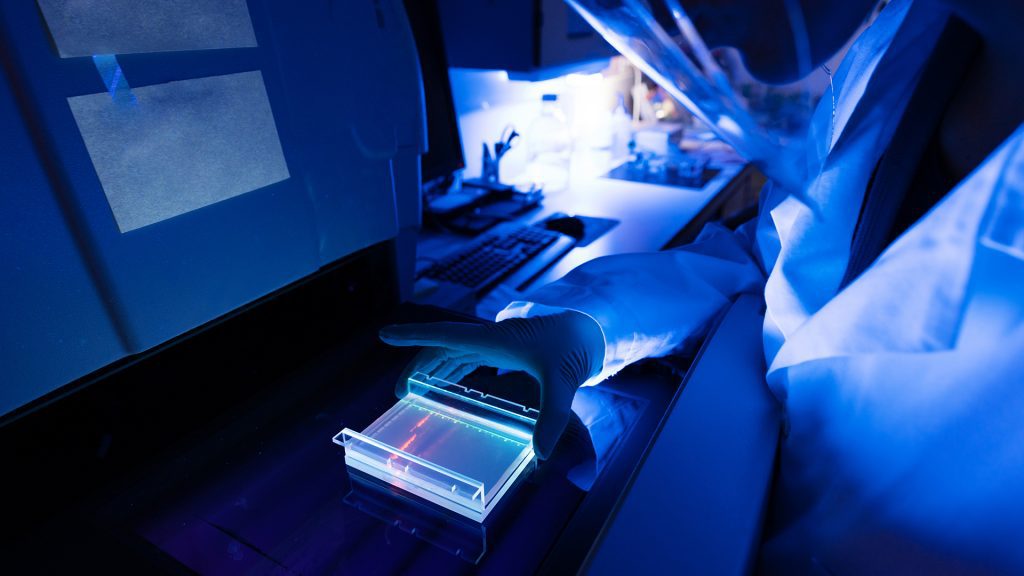
Following a first-in-human study which analysed the efficacy of UVA light treatment in COVID-19 patients, Health Europa spoke to Dr Ali Rezaie from the academic healthcare organisation, Cedars-Sinai, to find out more.
Over the past two years, the benefits of UV as a disinfectant treatment have been endorsed by many. While this technology has been applauded for the speed at which it can disable viruses on surfaces and in the air, for the first time this year, it was trialled as a treatment for COVID-19 patients. Having undertaken a series of studies and preclinical experiments which looked at the antiviral and anti-inflammatory effects of ultraviolet A (UVA) exposure on certain bacteria, fungi, and viruses, Dr Ali Rezaie, Associate Professor of Medicine and Medical Director of GI Motility at Cedars-Sinai, launched a first-in-human study to establish the efficacy of narrow-band UVA therapy on critically ill COVID-19 patients. Together with his team, Rezaie engineered a novel device designed to be administered via an endotracheal tube, which would apply UVA light treatment in order to reduce the respiratory load of the SARS-CoV-2 virus. During the trial, which was overseen by an external independent Data and Safety Monitoring Board, patients were given 20-minute treatments over five days and showed a dramatic reduction in viral loads, therefore improving their clinical condition.
Although researchers were limited by the small number of participants who took part, the trial shows the promising potential of UVA light treatment within the medical sector, particularly when treating inflammatory, microbial, and viral diseases. To find out more about the trial, Health Europa spoke to Dr Ali Rezaie.
Can you tell me about your overall aims with this study?
To give you a bit of background, we have been working on this whole concept of whether we are capable of taking UVA into the human body since 2015. We started looking into the antimicrobial properties of ultraviolet and its effects. In medicine, there are a lot of antimicrobial and anti-inflammatory models and treatments but few that incorporate both properties.
Considering that UV photo therapy is already an approved therapy for dermatological disorders like psoriasis and eczema, and it has anti-inflammatory and potentially some antibacterial effects, we started to do experiments and were surprised to find that UVA has antimicrobial benefits. Most of the literature around ultraviolet predominantly discusses the antibacterial properties of UVB and UVC, our aim was therefore to pinpoint a so-called therapeutic window for UVA therapy whereby we administer the correct dosage without causing the patient any harm. We carried out thorough research in this area taking multiple factors into account including intensity, wavelength, bandwidth and also the distance from the target, which determines how it affects the tissue. Having confirmed that UVA does have antimicrobial effects without harming human cells in vitro the next step was to see how we could take this into a living organism.
We invented a fibre optic system that could accommodate the UVA in that optimal bandwidth and administered this system inside the colon of mice. Interestingly, even though we knew that the squamous cells on the skin are capable of taking some UVA – as we do every day when we are outdoors – we were unsure if this would be the case with the internal columnar epithelial cells. However, we did not see any alterations in the mice after multiple treatments, therefore, we discovered this application was both safe in vitro and in vivo.
Subsequently, as UV LEDs started to emerge on the market, we decided to transition from the fibre optic rod to UV LEDs using the same wavelength and distance. We applied the UVA to fungi and found it decreases its growth. We also looked at the effect of UVA on certain RNA viruses such as coxsackievirus, as well as DNA viruses and variants.
Then, in December 2019, COVID hit and so we began to consider the effects of UVA on the SARS-CoV-2 virus. We had another coronavirus in our lab, which in some ways is very similar to SARS-CoV-2 but not as infectious. Back then, very few academic centres would allow you to do experiments with SARS-CoV-2. We applied UVA to tracheal cells and found it to be effective in preventing the virus from infecting those cells, and more than that, those cells took over and could thrive. We also carried out further experiments on the same cells to test for any oxidative DNA damage and did not see any excess and increment in the DNA damage with the same dose.
By February 2020, we wondered if we could apply the UVA to humans. We wanted to investigate the safety and treatment effects of a novel UVA-emitting device inserted into the endotracheal tube of critically ill patients with SARS-CoV-2 infection. In terms of designing the device, we were lucky to have a very good engineering partner who could put the device together quickly, something like this would usually take around five years to make. There were lots of intricate parts to be included such as the connector that goes through the tracheal tube. The device also required a cooling system inside the catheter because LEDs produce a little bit of heat and likewise, we needed to design an LED that was safe to be administered inside the body. We then submitted the design to the FDA for approval. We knew that UVA was effective against coronavirus and safe to use in animals, in vitro and in vivo, so we had all this data to support the human study.
What can you tell me about the disease burden of the patients treated with UVA-therapy and how do you envisage the efficacy of UVA therapy in patients with comorbidities?
For the trial, we had five patients who were intubated with the SARS-CoV-2 infection, we did not have much of an exclusion criterion except for the fact that the endotracheal tube had to be bigger than 7.5mm. We treated these patients specifically because they had severe COVID, were in ICU, and there was no magic bullet to ease their condition. It is also worth noting, all the anti-inflammatory, anti-microbials and antiviral drugs that we use do not penetrate the most inflamed area so the advantage of this device is that you can go directly to warzone, so to speak.
Each patient received five doses, lasting 20 minutes each and were monitored for 30 days. Very importantly, we did not have any complications in terms of insertion or mechanical issues relating to ventilation. Four out of five patients were discharged from ICU and eventually discharged from hospital and when we did the final tests there was no virus present. One patient unfortunately died 17 days after enrolment due to intracranial haemorrhagic complications of anticoagulation while receiving extracorporeal membrane oxygenation. With the other patients, we saw a dramatic drop in the viral load over the five days of treatment. We also saw some decrement in inflammatory markers.
Although I cannot say for sure at this stage, I think the UVA treatment would be effective in patients with comorbidities, though further studies are needed to evaluate the safety and effects of narrow-band UVA therapy. The reason we chose to focus on patients in the more life-threatening range according to the WHO clinical severity scale (all subjects scored 9/10) is because there are very few specific treatments available for these patients at this stage.
It is possible to use UVA to activate the cells in mild cases and moderate cases, not endotracheal, but through the nasal pathway. This is something we are working on, and I think the data that we have makes this a reasonable path to pursue. I think UVA-therapy has a future in the treatment of RNA viruses.

Did you experience any significant setbacks or challenges over the course of the trial?
At the beginning, the main challenge was how do we take UVA inside the human body as this had never been done to this degree before. From an engineering standpoint, it was very challenging to design the catheter and determine the correct intensity, how to cool the LEDs as well as how to keep the system stable with the same level of UVA being emitted. We also had to be careful not to disturb any of the other medical equipment attached to the patient as this was a closed system.
More widely, whenever there is a novel idea, there is going to be scepticism, that is part of science. There should be checks and studies as these are critical for the progression of knowledge and that is why we did this step by step and published a few peer-reviewed papers in order to find a mechanism that works and clarify why it works. We are happy that we have found an alternative way that can potentially help patients, not just in this pandemic but in the future too.
What potential do you think UV light treatments hold for the medical sector?
I think in 30- or 40-years’ time there will be a branch of medicine that will deal solely with internal UV therapy, and I am very glad that we were able to lay the first brick. Essentially, you can put UVA in any hollow organ to treat all sorts of inflammatory, microbial, and viral diseases. Obviously, the technology needs to be developed, and we are in the process of developing multiple modalities to target different pathways. I see this as an alternative, antimicrobial sort of pathway that will be used in future.
Ali Rezaie, MD, MSc, FRCPC
Medical Director, GI Motility Program
Director, Bioinformatics and Biotechnology, Medically Associated Science and Technology (MAST) Program
Associate Clinical Professor, UCLA
Associate Editor, Journal of Digestive Disease and Sciences
www.cedars-sinai.org
This article is from issue 19 of Health Europa Quarterly. Click here to get your free subscription today.








